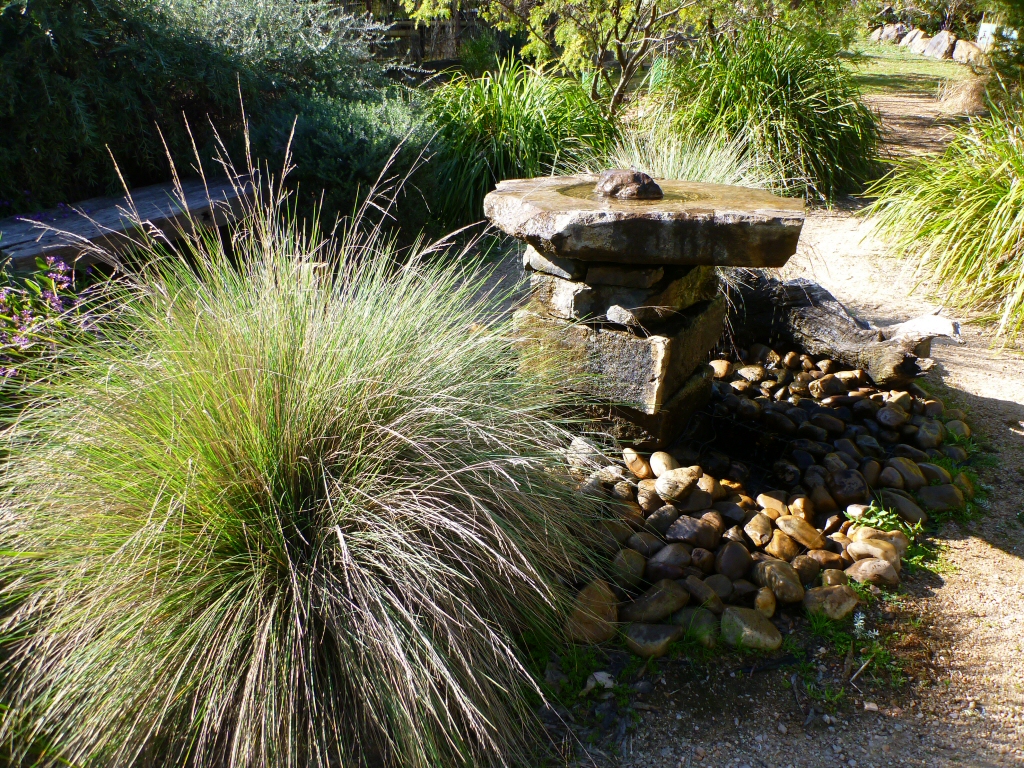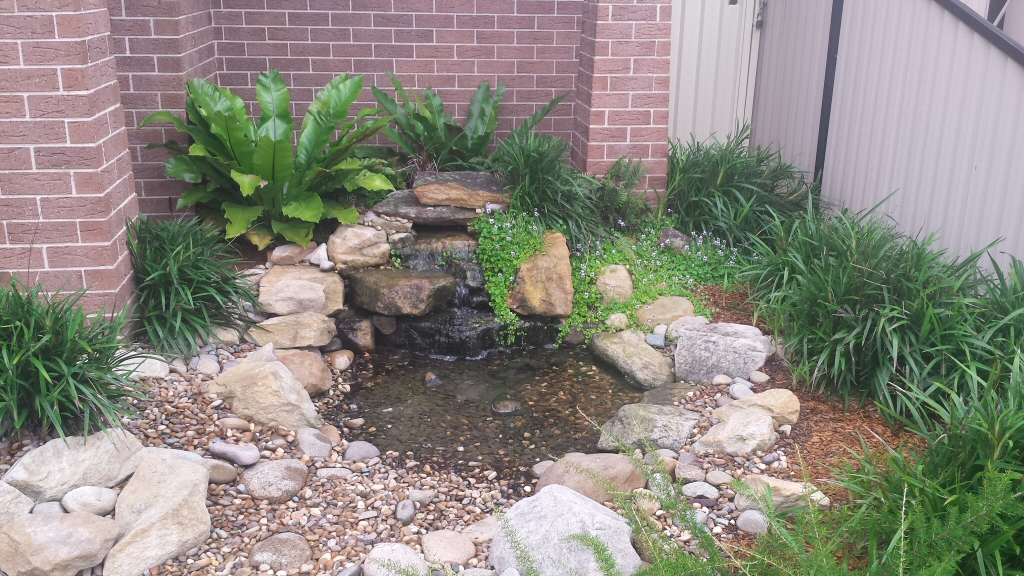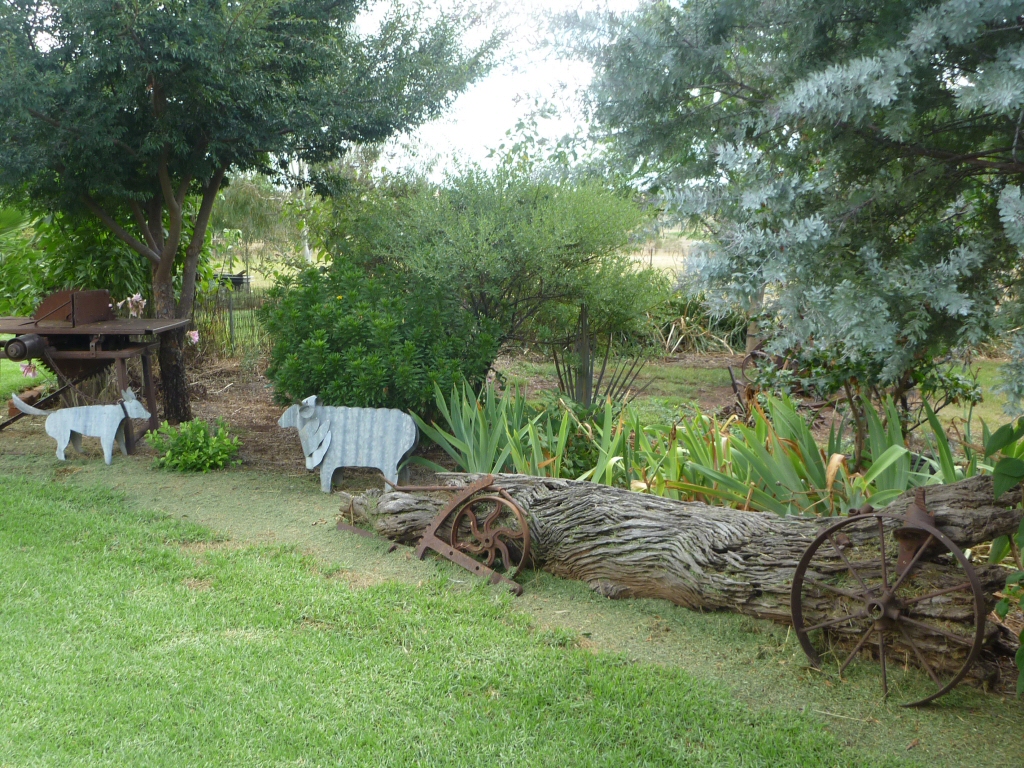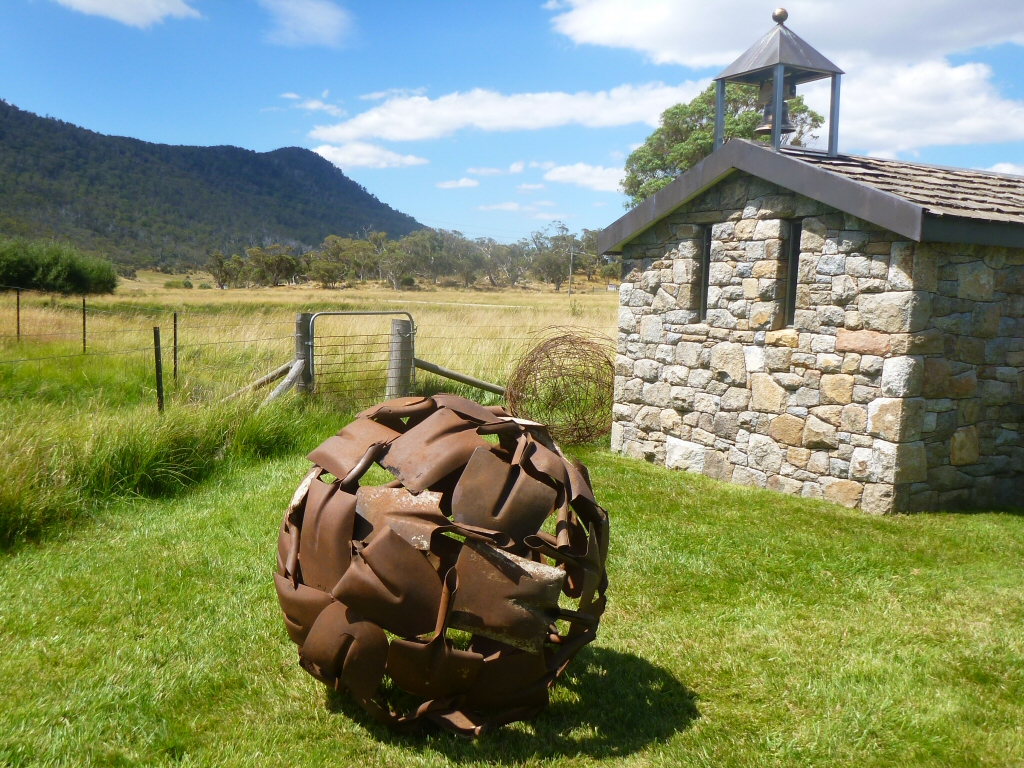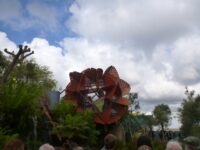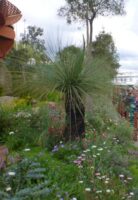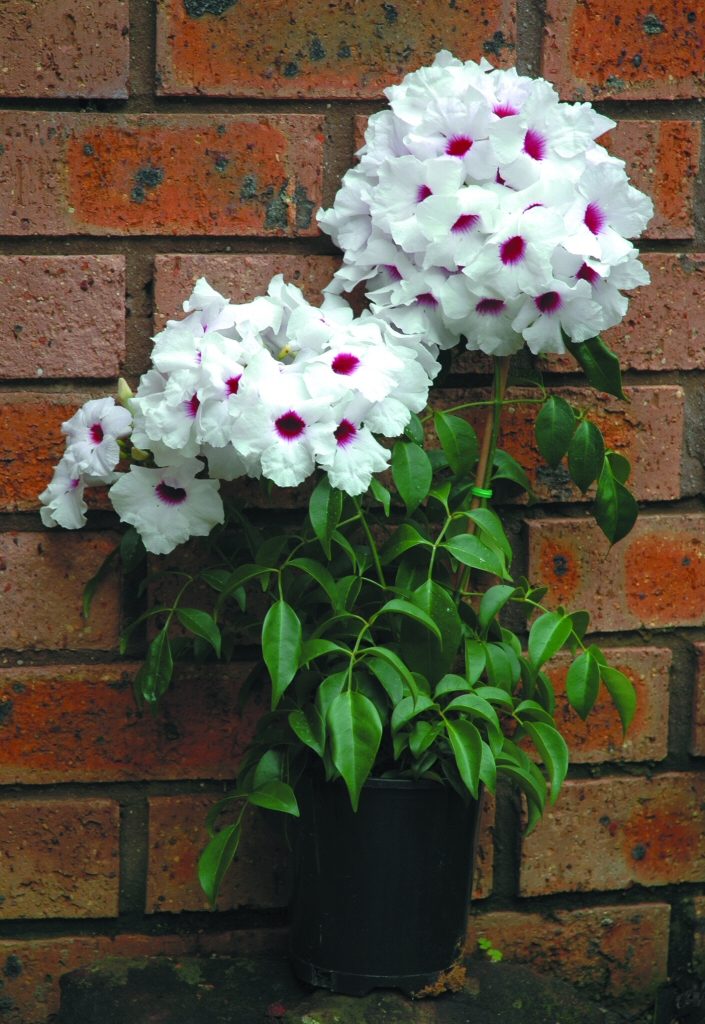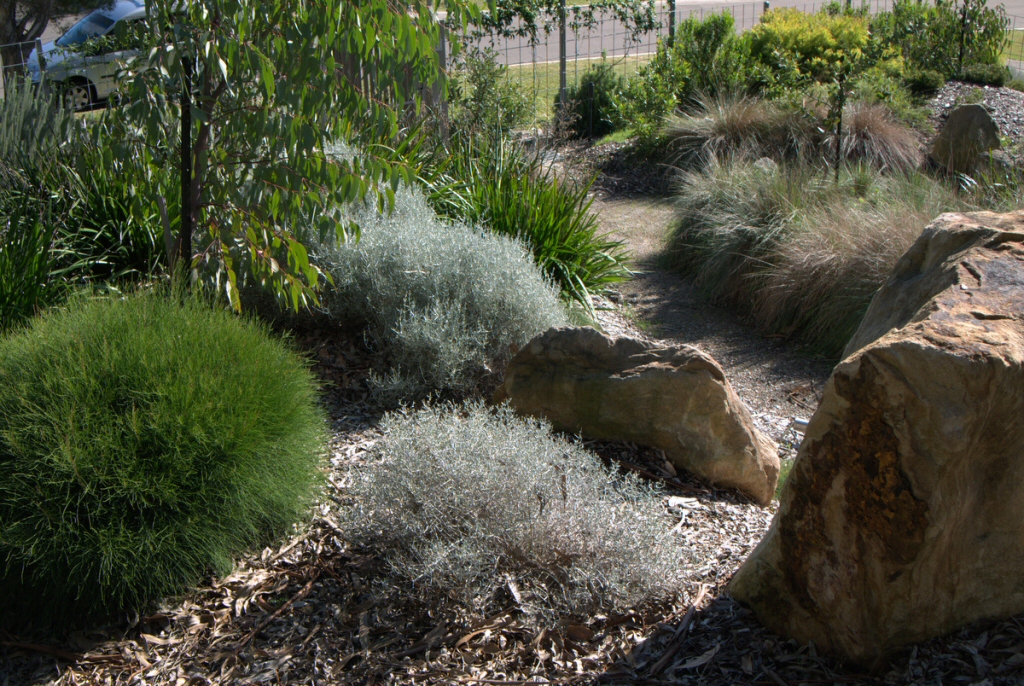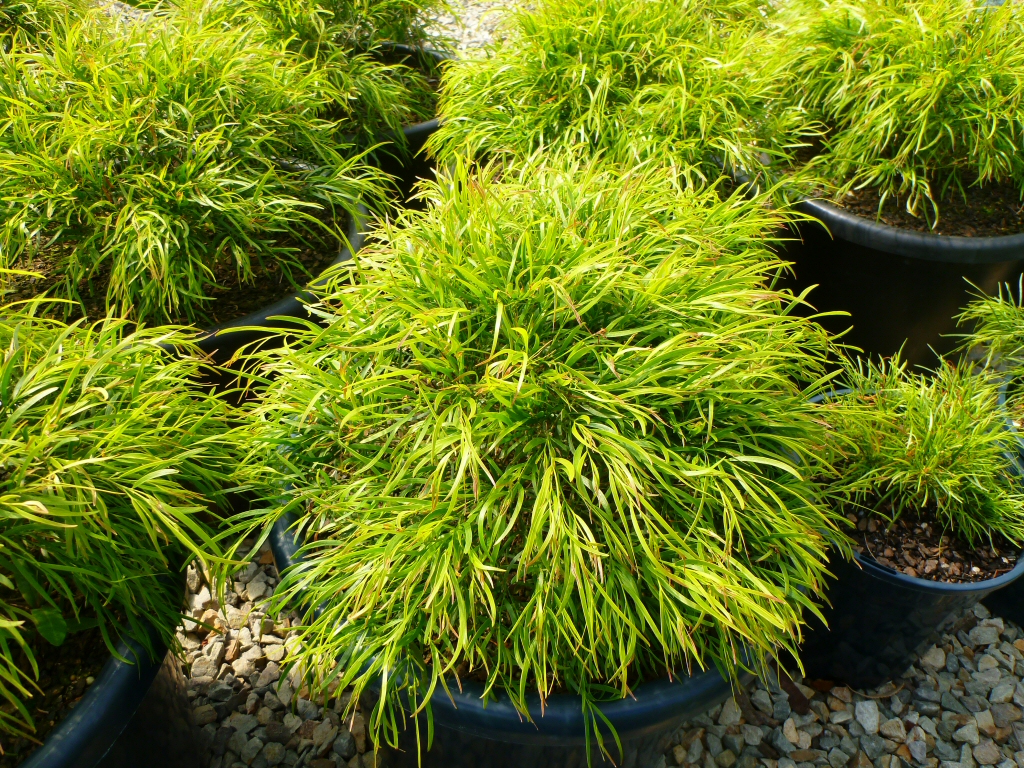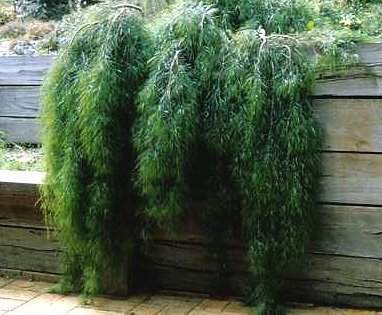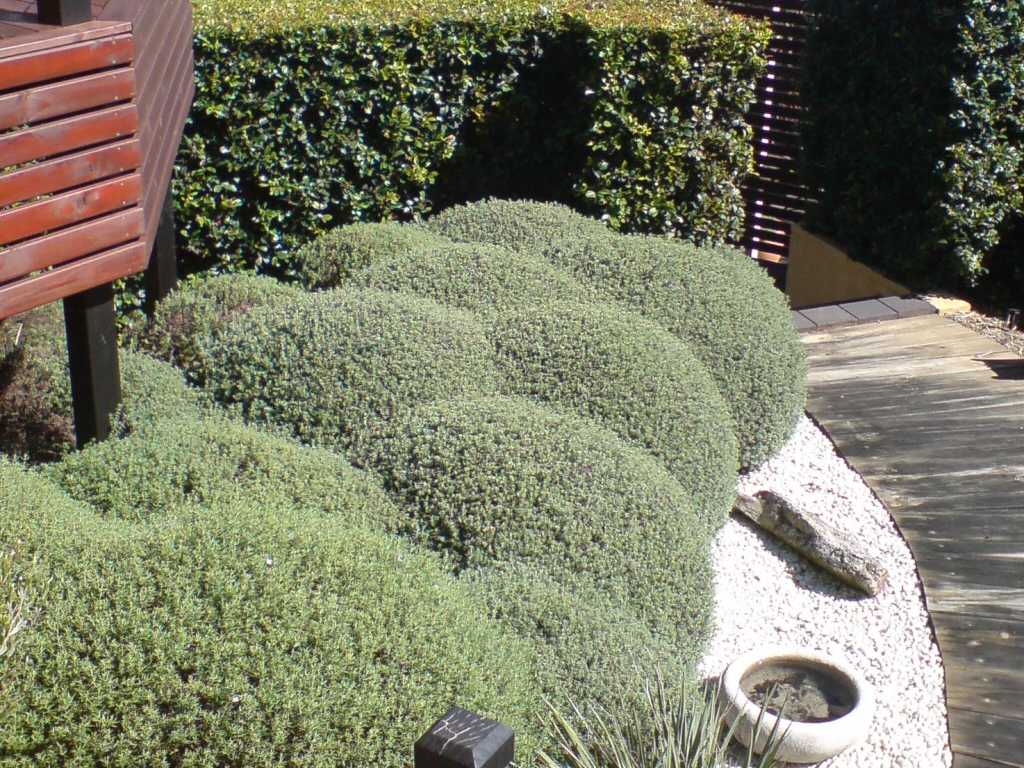Is there such a thing as a distinctively Australian garden style? I would certainly argue the case, and if there is such a thing as a distinctively Australian garden design concept, it would be best described as the ‘Bush Garden’. The hallmark of this design idea is an emphasis on the use of Australian plants, particularly the iconic genera such as Eucalyptus, Melaleuca, Banksia, Grevillea and Xanthorrhoea to name but a few.
The distinctive textures and shapes of these plants create an unmistakably Australian landscape when they are used in mass plantings. A naturalistic informal layout that mimics a wild bushland landscape is usually combined with the use of water features (such as frog ponds) to encourage wildlife to not only visit the garden but to actually live there as well.
Distinctively Australian sculptures made from materials such as corrugated or rusty iron and often with a rustic theme feature in many bush gardens as well.
There have been some notable pioneers of the ‘bush garden’ style such as Gordon Ford and Ellis Stones, and some wonderful examples of their work can be found in Melbourne, particularly around the Eltham district. The use of mudbrick houses that blend beautifully with the ‘bush garden’ landscape are a beautiful additional feature, with the house often designed to be in sympathy with the garden.
In recent years a new wave of garden designers has emerged, with a good example being Phillip Johnson who took out the ‘Best in Show’ award at the 100th anniversary Chelsea Flower Show in 2013. Phillip Johnson’s striking achievement in winning the top award at such a prestigious Royal Horticultural Society show gave international recognition to the ‘bush garden’ concept and it showed that international designers were being strongly influenced by the ‘naturalistic’ style head of the neat geometrically themed gardens of box and yew hedges that have prevailed in Europe for hundreds of years.
The overwhelming themes of Phillip’s winning garden was sustainability and reconnection of the gardener with the natural world, right down to the frog sound effects (recorded in Phillip’s garden in the Dandenongs near Melbourne) that greet the visitor. The crystal clear fresh water pond that was the centre piece of the design represented a natural Australian billabong, and was partially fed by the capture and conservation of storm water from the site.
Other features of the design were the use of recycled materials and solar power, bushfire retarding systems and plantings as well as an underlying theme of biodiversity and habitat creation for local wildlife. The garden was an unashamed celebration of the Australian landscape and one of Phillip’s ambitions was to create that a garden that will inspire Australians to bring our natural environment into urban gardens.
The plantings in the award-winning garden at Chelsea ranged from mature flowering grass trees (Xanthorrhoea species) to bottle trees (Brachychiton rupestris) and snow gums (Eucalyptus pauciflora) of varying maturity to foreshadow the development of a garden like this over time. A stunning array of flowering annuals and perennials was used to create the wow factor including everlasting daisies in yellows and oranges from the Sundaze range of Xerochrysum (synonym Bracteantha); the soft whites and pinks of an annual everlasting daisy (Rhodanthe chlorocephala subspecies rosea)hybrids); the fluffy mauve flower heads of the mulla mulla (Ptilotus exaltatus), native daisies (Brachyscome ‘Mauve Mystique’). The fresh water swimming pond simulated a natural billabong and was planted with a variety of water plants to demonstrate natural filtering of the water and to provide habitat for birds, fish, frogs and insects.
I would argue very strongly that the bush garden style has resulted from Australian gardeners increasingly wanting to create a ‘sense of place’ as a landscape statement. Early European settlers clearly favoured a gardening style that echoed that of their homeland, but over a couple of hundred years we have come to recognise that soils and climatic conditions over most of the continent are not conducive to the traditional European style garden. Add to that dynamic the apparent effects of climate change and we are developing a garden style that is less and less reliant on inputs of water and fertilizer.
The development of better cultivars of Australian plants has also increased the palette of plants available to gardeners such that the shapes, textures, sizes and colours can match it with the traditional exotic plant offerings. The trend towards smaller gardens in suburban areas has led to the development of a fantastic array of dwarf native plants such as the many compact cultivars of hairpin banksia (B. spinulosa) and river wattle (Acacia cognata). The recent increase in interest in growing edible plants of all descriptions in modern gardens has led to a great increase in the availability of ‘bush food’ plants as well.
As well as the ‘bush garden’ style, most Australian gardens now feature at least some native plants such as grevilleas, but often their use is rather random and lacks any sense of design. Australian plants are sometimes used as part of other garden styles such as Japanese gardens where plants such as Westringia fruticosa adapt very happily to the closely clipped form that is required of plants in a Japanese garden.
Herbaceous native plants such as scaevolas and everlasting daisies lend themselves brilliantly to the cottage garden style that is often a feature of European gardens. Given that Australia is a multicultural society it is to be expected that well-travelled Australians will wish to incorporate design styles from around the world but will give them a local flavour by using native plants where they will fit the design brief.
Whilst I would never seek to discourage gardeners from incorporating Australian plants into a garden based on exotic species I believe that we can encourage a much better result by demonstrating good design principles with Australian plants. In particular, the continued evolution of a distinctive Australian garden style as outlined above will encourage gardeners to create garden landscapes that are much more in sympathy with the landscape of our unique continent.


